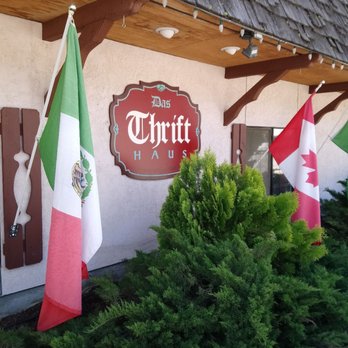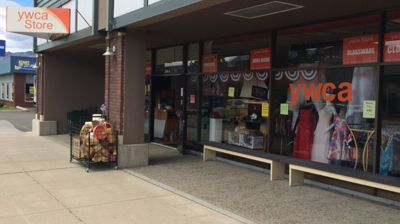Sustain Your Style - Get Thrifty
- marlene0303
- Mar 12, 2022
- 4 min read
By Jenny Montgomery, SW board secretary
Today our feeds are flooded with perfectly curated and targeted mass marketing ads. Everything you want is accessible, and one click away. The fast-fashion world is just one of those industries happy to feed our growing hunger for consumption at a rate never seen before. If you take a look at the world population, you’ll see that it has basically doubled since the 70s, but the rise of fashion and the fashion industry has outpaced that growth several times over. With a yearly consumption of about 80 billion new garments worldwide (a 400% increase since 2000), we are not just outfitting the population anymore; our hunger for fashion has had extreme impacts on people and the environment. The good news is that in 2021, we are becoming more conscious consumers, exploring how we can live simpler lives, use what already exists and, in some ways, even hold ourselves accountable to know the brands we purchase from. One result of this new perspective is the rise of secondhand shopping or the trendier title thrifting. So for this article, I will try and bust a few common secondhand myths, offer up consumer-friendly tips, and explore why we should give local used threads and their organizations a chance.

Myths
Secondhand stores are dirty and overcrowded.
Okay, some thrift stores pay no attention to merchandising or the shopping experience, but you’ll find that those stores are more common in the past than they are today. As demands have increased, thrift, consignment, and vintage have evolved. If you look past the large number of items occupying racks, the missing fluff, and the lack of mass marketing ads, you will see that stores are clean and organized.

I don’t have the time.
Digging through stacked piles and racks of clothes can be overwhelming. Some thrift stores operate more like a warehouse than a storefront. So if you plan to look at every single piece, you are right; that would take time. If you want to explore secondhand without occupying your whole day, adjust your mindset and go in with a plan. Take a broad look at the entire store, watch for specific aesthetics and keep your eyes peeled for your preferred color palette. This awareness will help you scan and work your way through with intention. The scan is a great tool that takes some practice but once mastered; you can save time and still find your perfect pieces.
I won’t have the newest styles, and I won’t fit in.
The flared jeans in my closet perfectly mimic the style of my mother’s teenage years, and I have several vintage blazers that you can find replicated at department or boutique stores across the country. Fashion is a cycle! Cool or not, most trends we wear today will go out of style and almost as quickly come back into style.
Another idea to keep in mind is the opportunity to renew or give quality pieces from seasons past a second chance. If you pick well-made goods, you have the chance to rework or repair the items to fit your wardrobe. Those pre-owned textiles are already in the market, so we might as well put them to work.
If you know your individual style, you won’t have any trouble fitting in.
Reasons to secondhand shop
There is no planet b
The supply chain for clothing is extensive, and the fashion industry as a whole is a top global polluter and source of greenhouse gas emissions. Each step of the supply chain, from fibers and textile production to dyeing, sewing, and finally distribution center storage, can happen in different countries. As a result, dozens of people can touch one single item, and the journey there is made with waste: water, chemicals, CO2, and plastic.
Downstream, by shopping local, you reduce the number of miles your items travel, resulting in lower emissions, and you have the opportunity to skip packaging all together to reduce waste.
Keep it local
Most thrift stores are local small businesses that support the community or boost the economy. A large portion of thrift stores also have a charitable mission or a good social component. Locally, the YWCA Thrift Store designates 100 % of proceeds to help sustain YWCA NCW’s life-changing programs and services for local families in the process of rebuilding their lives. When you volunteer or shop at the YWCA Thrift Store, you directly support the programs and services that the YWCA provides to our community. Some of those programs support housing, job training, and economic empowerment. Das Thrift Haus is another great non-profit example located in Leavenworth. Their mission and your donations help provide critical services like food banks programs, emergency assistance programs, and affordable clothing and household items to the Upper Valley. Income from the Thrift Shop at the Wenatchee Valley Senior Activity Center sustains the Senior Center itself. These are just three examples, but continued research will show you the tangible impacts of these community-driven establishments on the people living near their stores.
Your wallet
If you love to shop sales or consider yourself a bargain shopper, secondhand shopping is for you. The obvious perk to buying gently worn or used clothing is that it will save you money. You can find “like new” items for a fraction of the price. At thrift shops, 50-90 % discounts are not a special or doorbuster sale but a daily deal, and many places even leave a little room for you to bundle or negotiate the price.
I hope you have enough evidence to crush your fears of secondhand shopping. There are millions of well-designed, quirky, and beautiful pieces that already exist. So whenever you decide to update your wardrobe, grab a reusable bag and give it a shot. Those passed down or tossed out pieces just need a chance and a creative eye to tell their story. So why not choose secondhand over fast fashion?

** All clothes pictured were purchased or free from the local YWCA, Wenatchee Valley Senior Center, the Veterans Warehouse, a Wenatchee Poshmark online store, and yard or estate sales. **

















Comments